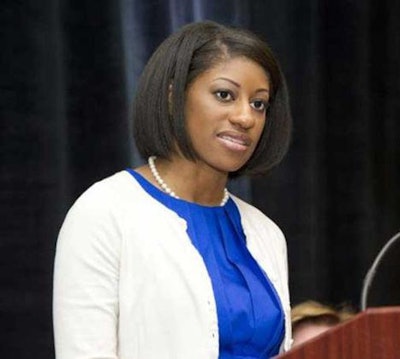 Zakiya Smith of the Lumina Foundation for Education doubts that the default rates would be climbing if borrowers were in the Income-Based Repayment program.
Zakiya Smith of the Lumina Foundation for Education doubts that the default rates would be climbing if borrowers were in the Income-Based Repayment program.When the U.S. Department of Education released new data this week showing that the three-year default rate on federal student loans had increased from 13.4 percent to 14.7 percent, Zakiya Smith, a former senior education policy adviser for the Obama White House, said she became “alarmed.”
The reason is because the latest default rates involve a cohort of students who began repaying their loans during a time when the Obama administration was trying to “get the word out” about various repayment options meant to help students avoid default, Smith said.
“This rate increase is based on a time period when Income-Based Repayment and Pay As You Earn options were available to students,” said Smith, who now serves as strategy director for student financial support at the Lumina Foundation for Education, an Indianapolis-based organization that espouses increasing the number of college graduates with degrees of value in the labor market.
“It goes back to if we have those options available, you would think — even if the economy was pretty bad — maybe the default rate wouldn’t be going up at such a high rate,” Smith said.
She said the higher default rates suggest that “people don’t know about” IBR.
“They wouldn’t have defaulted if they were in the program,” Smith said.
Although borrowers are required by law to be informed about IBR, Smith said it could be that the message is not being delivered in a clear enough manner.
“We haven’t figured out how to get through to people,” Smith said.
Jason Delisle, director of the Federal Education Budget Project at the New America Foundation, echoed those concerns.
“On paper, no one should default. You’ve got three years of forbearance for anybody, and then you’ve got IBR that gives you — at a minimum — an $18,000 exemption before you have to make a payment,” Delisle said, referring to the salary level under which no payments are required. “And there are basically nine different repayment plans that you can choose from.
“That’s why I do wonder if the question is one of implementing these policies and making people aware of them and ensuring that the right people find the right plans, or doing it for them,” he said.
The three-year rates announced this week were calculated based on the cohort of borrowers whose loans entered repayment during FY 2010 and who defaulted before Sept. 30, 2012, the Education Department said.
Of the more than 4 million borrowers from some 5,900 postsecondary institutions who entered repayment during this timeframe, roughly 600,000 of them defaulted, for an average of 14.7 percent, the department said.
The three-year cohort default rate increased over last year’s three-year rates for both public and private nonprofit institutions. Specifically, the rates rose from 11 percent to 13 percent for public institutions, and from 7.5 percent to 8.2 percent for private nonprofit institutions, according to the department.
Though three-year cohort default rates at for-profit institutions remain the highest overall, those rates decreased from 22.7 percent to 21.8, the new data show.
Delisle noted that lifetime default rates — in 2010 the average lifetime default rate was 17.6 percent — are significantly higher than the three-year default rates but don’t get as much attention.
Miguel Palacios, assistant professor of finance at Vanderbilt University, said if he could advise Congress on how to abate the student loan default problem, he would call for withholding financial aid from institutions where high percentages of students default on their student loans.
“The financing has to be tied to the value provided by the education,” Palacios said. “That, I think, is the only point I would stress.”
Palacios rejected the proposition that the increase in student loan default rates had anything to do with the economy.
“The realities of the economy are a very minor part of it,” Palacios said. “College graduates do much better than high school graduates. If anything, the economy makes a stronger argument for going to college, but it’s a stronger argument for going to a good college.
“Institutions in which graduates don’t make enough money to justify the cost of tuition are the ones that [should not] get financing,” Palacios said. “Everyone else should get financing.”
Delisle said such a proposition “seems like an oversimplification” of the problem.
Too often, Delisle said, the discussion of student loan defaults is focused on “transactional information” — such as how many students defaulted, how much they owe and the like.
But a deeper question, Delisle said, is: Why?
“We really need better information about why people are defaulting, and you’re not going to get that by looking at transactional data,” Deslisle said. “We need to interview people who default or are struggling to repay, and crosscheck that with some of the larger data sets and transactional data.”
The experts interviewed for this article are among a series of experts scheduled to participate in a panel discussion at the New America Foundation on Friday, Oct. 4, titled “A Future With Zero Education Debt.”















